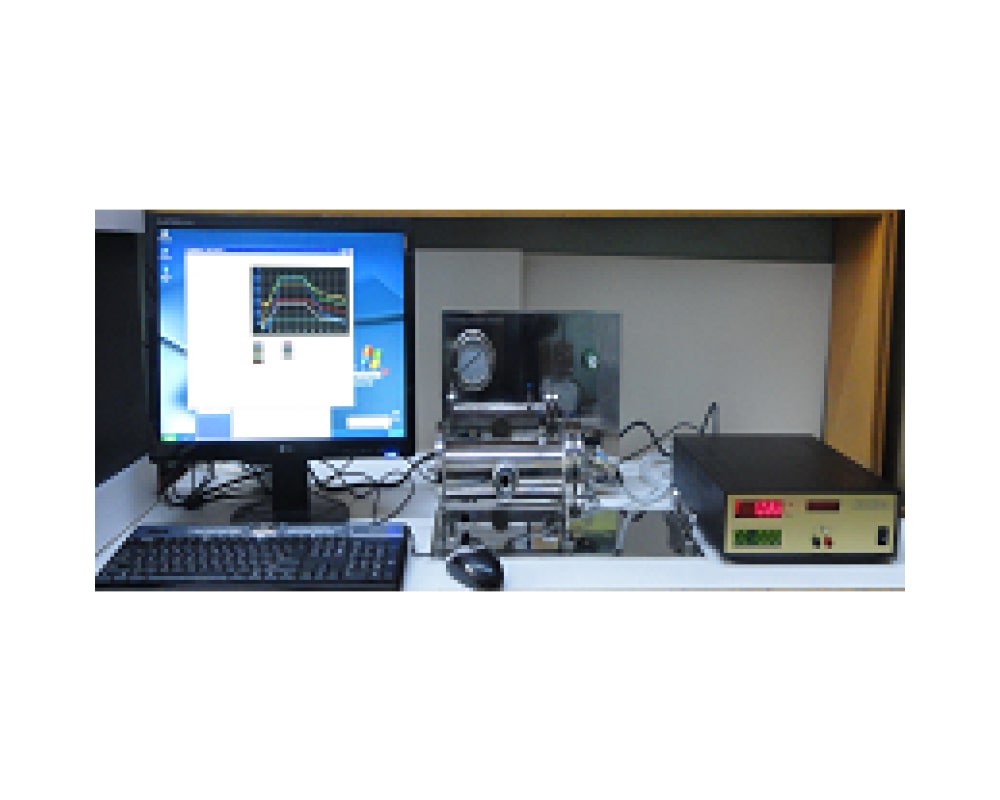High Speed Scanning Electrothermography Setup (HS SET-3) with Low and High Pressure Reactors
Primary Specifications:
• Operating temperature interval: 20-3500 oC;
• Heating rate of the sample: 1-106 K/sec;
• Cooling rate: up to 5·104 K/sec;
• Measurement frequency: up to 10 kHz;
• Registration time: from 0.0001 sec;
• Probe length / diameter and thickness (for thin metal wire or foil probe): 6-10 cm (length) / 50-500 μm (thickness);
• Reaction atmosphere: vacuum or gas (up to several atmospheres).
Applications and Brief Overview of Potential Commercial Markets
The HSSET system is designed for physico-chemical studies in the following areas:
1) thermal and thermo-chemical testing and evaluation of materials;
2) physics and chemistry of solids;
3) kinetics and mechanisms of high-temperature interactions;
4) kinetics and mechanisms of heterogeneous catalytic reactions;
5) construction of multicomponent phase diagrams;
6) determining solid-phase diffusion coefficients;
7) non-stationary convective heat exchange assessment;
8) determining thermophysical and electrical characteristics of materials;
9) heterogeneous pyrolysis of gases;
10) ignition and combustion of solids;
11) oxidation and reduction of metals.
Advantages of the HSSET System
HSSET system is an integrated instrument comprising a suite of measurement capabilities. It allows for research under conditions out of the analysis range of modern thermographical and calorimetrical equipment. In particular, the HSSET instrument is exclusively capable of mapping distinct temporal-thermal pathways, and operating in a wide controllable range of reaction environments spanning from vacuum to high gas pressure settings. Due to its high performance and high speed design, the HSSET setup allows the study of transients derived from discontinuous or rapid impulse changes in process parameters. Such capability allows the use of the HSSET system to evaluate and assess a chemical and thermal system’s response to extremely rapid changes in process parameters, which may contain significant information about the reaction mechanism under study and consequently allow for much more efficient process optimization.




